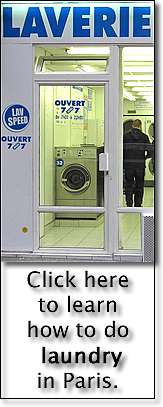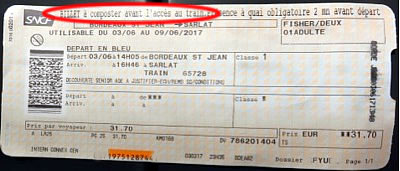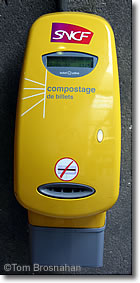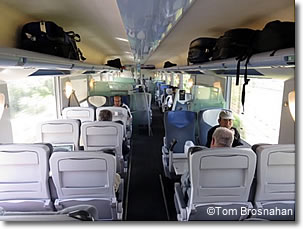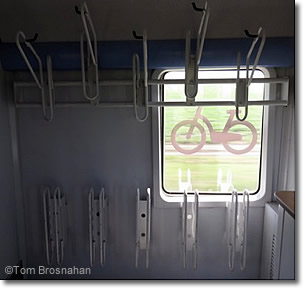 |
How to Travel by Train in France | |
| Get ready for a swift, comfortable journey, but know the procedures before you reach the station and board the train. | ||
|
|
|
Train travel in France is, in our opinion, the best way to get around the country: comfortable, fast, reliable, offering good value for money—especially if you know how to buy your ticket. Here's how to make your train trip easy and enjoyable: Advance ReservationsMost Intercité and all TGV inOui, Ouigo, Eurostar and international trains require advance reservations and may require seat assignments. You can buy your ticket(s) and reserve your seat(s) online in English or French. You may be able to buy a ticket at the train station just before traveling, especially for local and TER regional trains, but you take the chance that all seats may have been sold and you won't be able to take the train you prefer. Validate Your Ticket!At large train stations in France you'll scan the barcode or QR code on your ticket (paper, or smartphone e-ticket) to pass the fare gates and board the train; but in some smaller stations you may have a paper ticket which you must validate before boarding. (Here's lots more on tickets.) This is important! If you purchase a paper train ticket that is valid for any train (that is, not for a particular departure) you must validate it before boarding the train!
Validation (compostage) is done by inserting one end of your large ticket (don't insert a little Métro-size ticket) into a yellow validation machine (composteur) at the entrance to the train platform. (There are no validation machines on the platform or on the train.) The composteur prints the station code, date, time and some other numbers on the end of your ticket.
If you've bought a ticket valid only for a particular train departure on a particular date, such as when you buy an E-Billet ticket online and print it at home, your ticket is pre-validated. (Look for "pas de compostage" on the e-ticket.) You need do nothing else. If you are found riding in a train without a validated ticket, you could be subject to a large fine, or even legal action. If you have neglected to validate your ticket before boarding the train and the train has departed, make your way to the rear of the train, find the conductor (Chef de Bord), show him or her your ticket, and the conductor will validate it, saving you from legal and financial embarassment. If you wait at your seat and the conductor comes through checking tickets and finds yours unvalidated, you may be subject to the fine. Boarding Your TrainThe track (voie) or platform (quai) for an originating train is announced 20 minutes before a train's departure, giving you plenty of time to find the track/platform. Trains enroute may be announced with shorter lead times. On the platform you will probably see a notice board labeled Composition du Train showing the train consist—the position of each numbered car on the train, its class and special services such as oversize-luggage and bicycle-storage areas. Check your ticket for your seat assignment, which may read something like this: Train No. 3610, Voiture 4 - Place 022 - 2e Classe This means your seat, No. 22, is in Second Class Car No. 4. Look at the Composition du Train board and it tells you where your car (No. 4) will be positioned on the platform when the train arrives. These positions, called repères, are marked by signs with letters (A, B, C...W, X, Y, Z). You may see that Car 4 will be at repère W. Walk to that location and, when the train arrives, board your car and find your numbered seat. Riding the TrainMost cars have some luggage storage compartments, either at the ends of the car near the doors, or in the middle of car between seats, as well as the overhead racks. There may also be large-item storage areas elsewhere on the train. The comfortable reclinable seats on long-distance trains are equipped with tray tables and small waste containers. Many cars offer 220-volt electricity outlets/points, and perhaps even USB outlets, at each seat. The large windows have curtains or pull-down shades. Most cars have high-tech toilets at one end of the car or in a nearby car. There may also be special bicycle storage areas. Although restaurant cars are no longer as common as they once were, long-distance trains may have a refreshments cart rolled through the train by an attendant. TGV inOui trains have café/bar cars where you can sip and dine, or you can order beverages and meals from your seat and have them delivered to you.
|
|
Racing through the French countryside
Read While You Ride...
|
